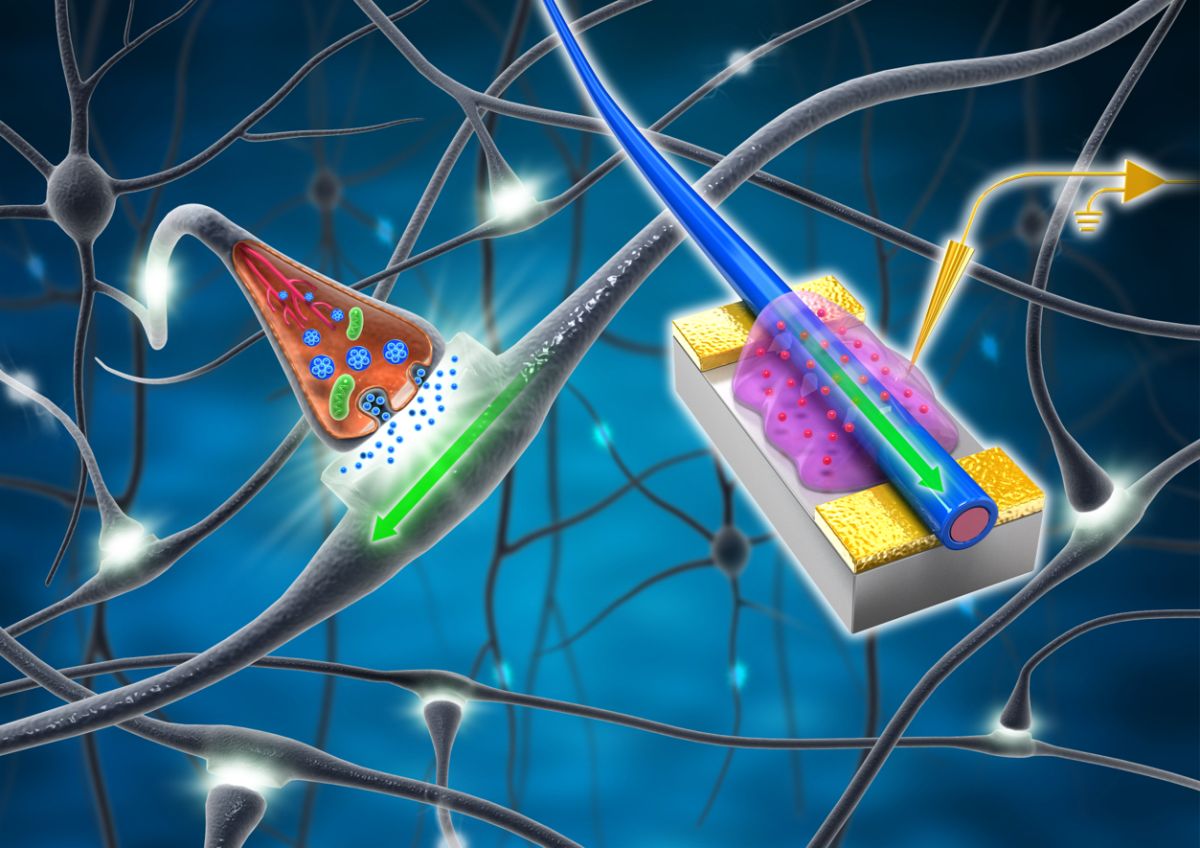News Highlight
Artificial synapse developed for brain-like computing with industry-compatible Nitride Semiconductors.
Key Takeaway
- Scandium nitride (ScN), a semiconducting substance with exceptional stability and CMOS compatibility, has been employed by researchers to create brain-like computing.
- This idea could lead to the developing of a novel material for stable, CMOS-compatible optoelectronic synaptic functions at a lower energy cost.
- As a result, it has the potential to be converted into a commercial product.
Artificial synapse developed for the brain: Study
- About
- Firstly, he goal of neuromorphic hardware is to simulate a biological synapse that monitors and remembers the signal created by stimuli.
- ScN is used to create a device that mimics a synapse and controls signal transmission while also remembering the signal.
- Significance
- This idea can potentially transition into a commercial product by providing a new material for stability.
- In addition, CMOS-compatible optoelectronic synaptic functions at a significantly lower energy cost.
- Traditional computers contain memory storage and physically distinct processing elements.
- As a result, transferring data between these units throughout an operation consumes tremendous energy and time.
- On the other hand, the human brain is a supreme biological computer that is smaller and more efficient because of a synapse that serves as both a processor and a memory storage unit.
- Furthermore, the brain-like computing technique can help satisfy the rising computational needs in the contemporary era of artificial intelligence.
Neuromorphic Computing
- About
- Neuromorphic Computing was a notion introduced in the 1980s that was inspired by the human brain and the operation of the nervous system.
- It is the creation of computers based on systems in the human brain and nervous system.
- Its devices can perform as efficiently as the human brain without requiring much space for software deployment.
- The development of the Artificial Neural Network model(ANN) is one of the technological developments that has reignited scientists’ interest in neuromorphic computing.
- Significance
- Neuromorphic computing has paved the way for improved technologies and quick advancement in computer engineering.
- It has been a game changer in the field of Artificial Intelligence.
- It has revolutionised the process of information processing.
- Furthermore, it enabled computers to operate with better and larger technology by utilising one of the AI techniques (machine learning).
Potential Applications of Technology
- Driverless cars
- Drones
- Robots
- Smart home devices
- Natural language, speech and image processing
- Data Analytics
- Process optimisation
Conclusion
- ScN is more stable, CMOS compatible, and can be smoothly integrated with existing Si technology than the present materials used to demonstrate optoelectronic synapse.
- It can be used to perform both excitatory and inhibitory effects.
Pic Courtesy: Live Science
Content Source: PIB



